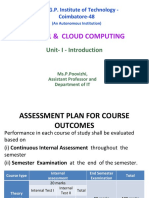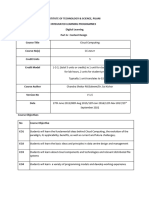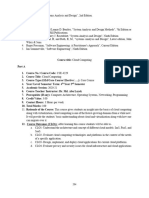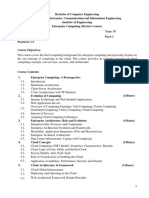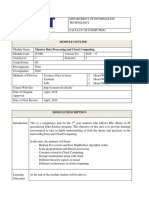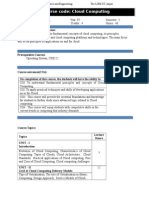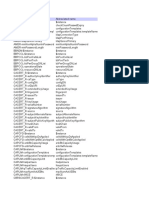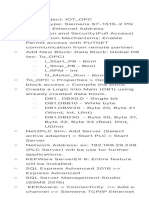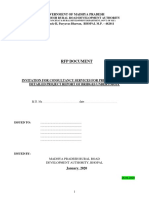0% found this document useful (0 votes)
20 views3 pagesCIS Syllabus
The document outlines the course structure for 'Cloud Infrastructure Management' (21CS4806) for the VIII semester of the IV year, detailing course objectives, outcomes, and content. Key topics include cloud computing architecture, virtualization technologies, cloud storage mechanisms, and security challenges. The course aims to equip students with the skills to analyze and evaluate cloud computing solutions and their applications.
Uploaded by
fatemakoth2513Copyright
© © All Rights Reserved
We take content rights seriously. If you suspect this is your content, claim it here.
Available Formats
Download as PDF, TXT or read online on Scribd
0% found this document useful (0 votes)
20 views3 pagesCIS Syllabus
The document outlines the course structure for 'Cloud Infrastructure Management' (21CS4806) for the VIII semester of the IV year, detailing course objectives, outcomes, and content. Key topics include cloud computing architecture, virtualization technologies, cloud storage mechanisms, and security challenges. The course aims to equip students with the skills to analyze and evaluate cloud computing solutions and their applications.
Uploaded by
fatemakoth2513Copyright
© © All Rights Reserved
We take content rights seriously. If you suspect this is your content, claim it here.
Available Formats
Download as PDF, TXT or read online on Scribd
/ 3















